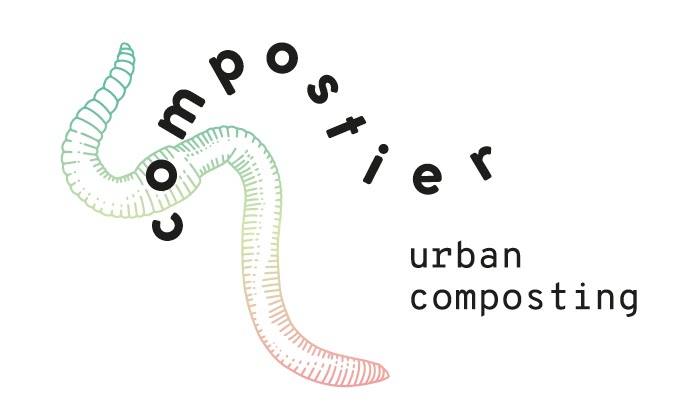| Raised Container Gardens in the shape of a honeycomb at Community Garden 'Sweetgrass in de Polder' - Diemen Zuid |
Honeycomb Garden Containers
A practical layout for a vegetable garden
One very important aspect to consider is the sun. Get out your compass and see what are the places in your garden that will get the most sun hours. In that way you will know in what direction to lay your garden beds and where to plant sun loving plants.
Another aspect is to make the garden beds in such a way, that it is easy for you to reach the centre of the beds, without stepping on the soil.
Stepping on the garden beds will compact the soil and harm the plants and soil live (micro-organisms in the soil).
There are several styles of garden design that will help you get good results. For myself, I have been lucky to be able to try out a few styles of gardening in our Community Garden Sweetgrass in de Polder.
At Sweetgrass we have made bigger garden beds with annual crop rotation and we have made several Hügel beds. This spring we have been able to build 11 raised garden containers in the shape op a hexagon.
I have been experimenting for years in the garden and I am still learning every day. So far I have found that the hexagon garden beds work really well for a beginner gardener.
Honeycomb garden design, playful and practical!
A honeycomb garden design consists out of several equilateral hexagons. (See here how to draw a perfect hexagon). Making your garden layout in the shape of a honeycomb has several advantages.By placing hexagon garden containers in your vegetable garden you will be able to work wit the plants easily, without ever having to stand on the soil.
Placing the containers with minimum space in between gives you an optimal usages of the space in your garden for growing healthy food, while still being able to walk in between the garden beds.
If you place the containers a bit further apart you will be able to walk through your garden with a wheelbarrow.
In any case the hexagon gardens will look great and offer a playful solution for your garden design. And it is very easy to build your own DIY Honeycomb Garden!
Square Foot Gardening, Crop rotation & Nitrogen Fixing Plants
Each of the hexagon garden containers can be divided into 6 even triangles. This allows for a clear devision of your garden beds.Whether you have a small or big garden, by using one or more honeycomb Square Foot Gardening containers you will create space for diversity in your vegetable garden.
If you rotate the crops annually between different containers, you help keep the soil healthy. Plant diseases will not get a chance to build up into the soil in that way. And using nitrogen fixing plants after a harvest will help get nutrients back into your garden beds.
Healthy Soil and the Soil Food Web
By not walking on the garden beds you are helping to maintain healthy soil for your plants to grow in. Healthy soil means healthy plants!
If the soil becomes to compact it cannot sustain soil life. There will be not enough oxygen in the soil and water is not able to sink in the beds, causing your beds to flood with heavy rains and dry soil when there is not enough rain.
The soil life is a key factor in growing healthy food.
The honeycomb garden containers are an easy design solution for maintaining healthy soil life in your garden beds. (Want to know more about the soil life and the Soil Food Web? Read: 'Teaming with Microbes')
Composting worms feed the soil of your Honeycomb Garden
Placing a tube made of Food Safe Grade Plastic at the heart of the container garden and drilling some holes in the tube will make a perfect home for Composting Worms. By adding a little home for Composting Worms in your Honeycomb Garden the worms will feed your plants for free.
Add some food scraps from your kitchen to feed the worms. The composting worms will transform the organic waste into a beautiful fertiliser for your garden: vermicompost.
Make your own Honeycomb Garden
Excited about making your own Honeycomb Garden? You can find the instructions on how to make your own DIY Honeycomb Garden box here!| Build your DIY Honeycomb Garden together with your children & get them excited to grow their own food! |

Geen opmerkingen:
Een reactie posten